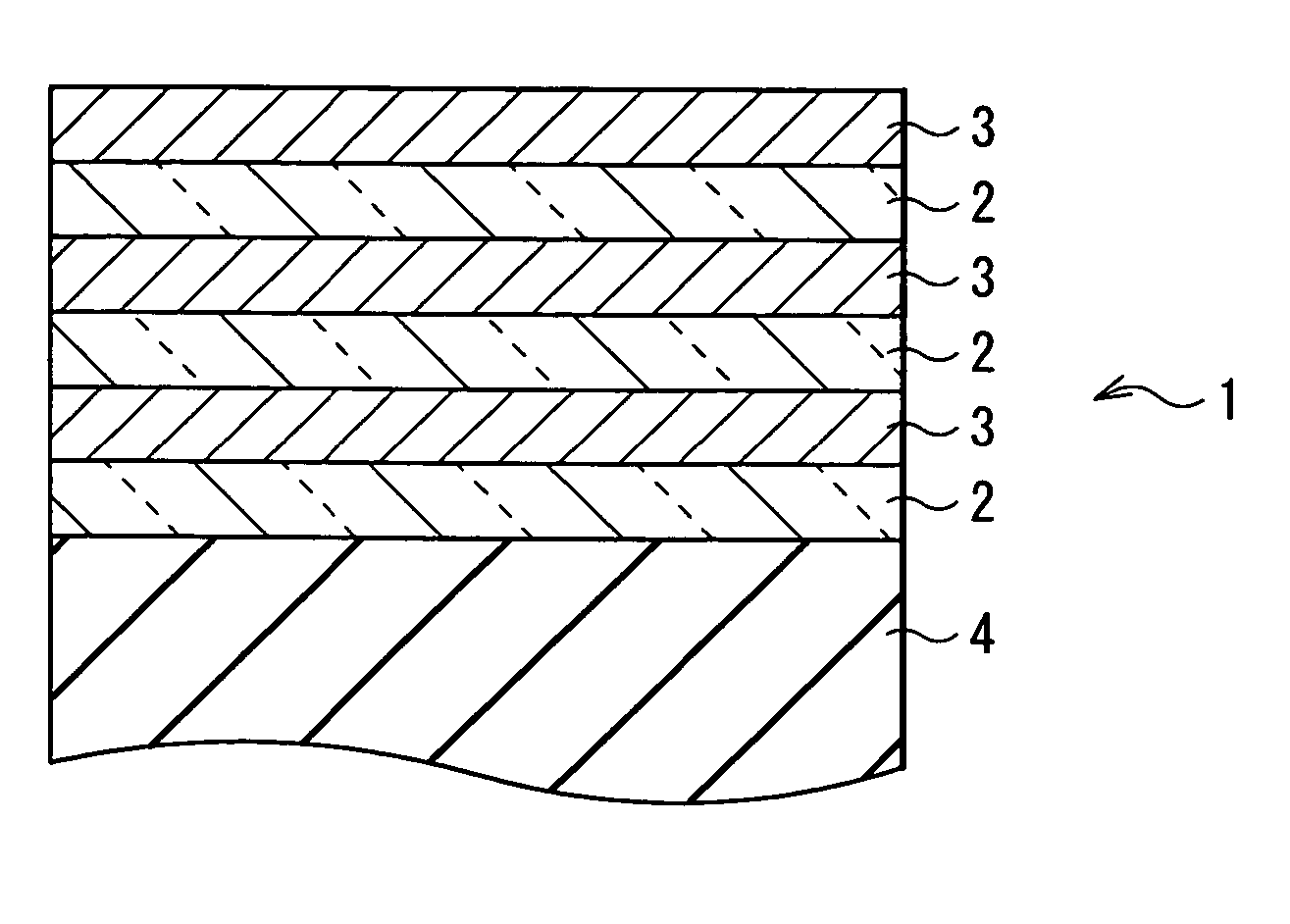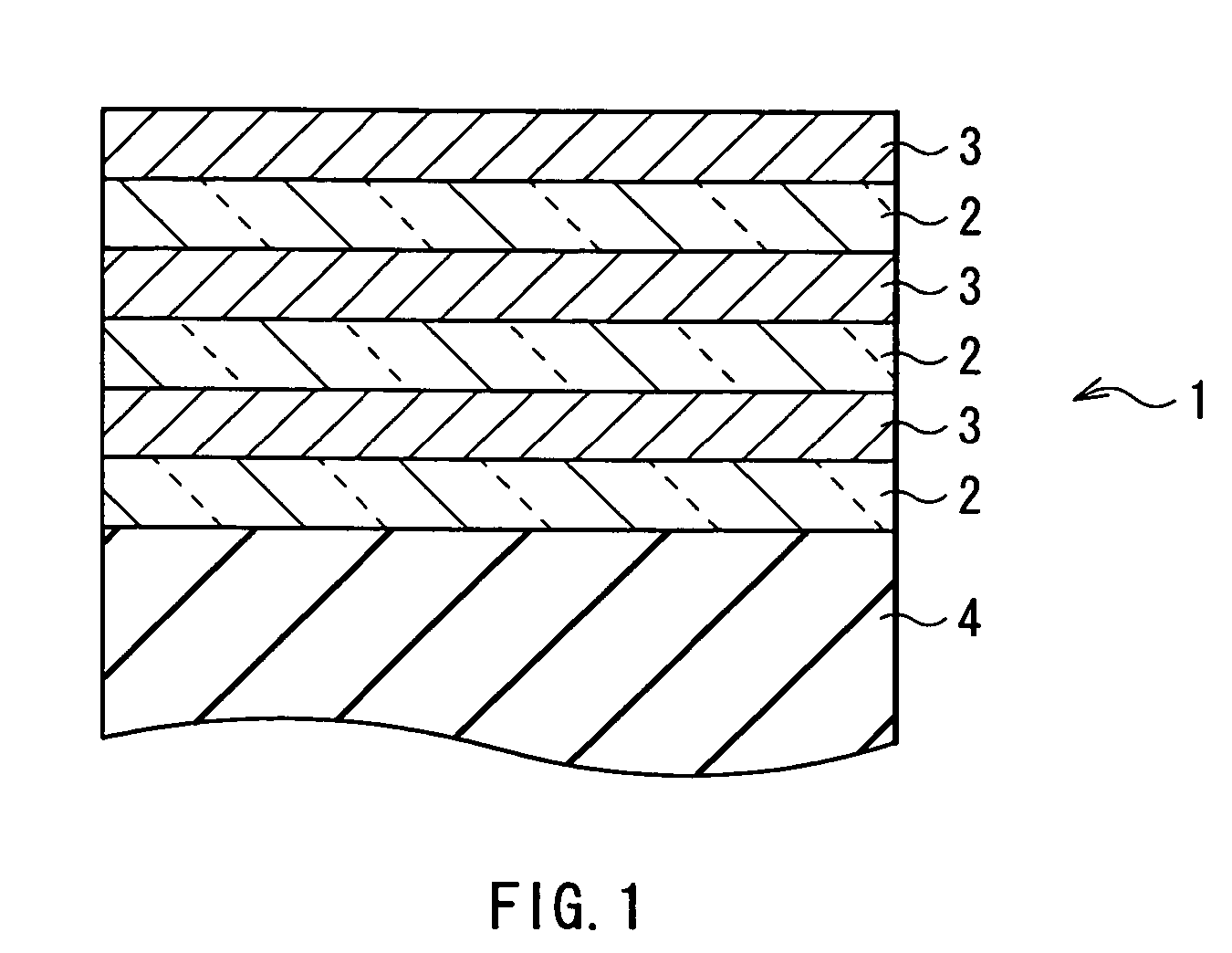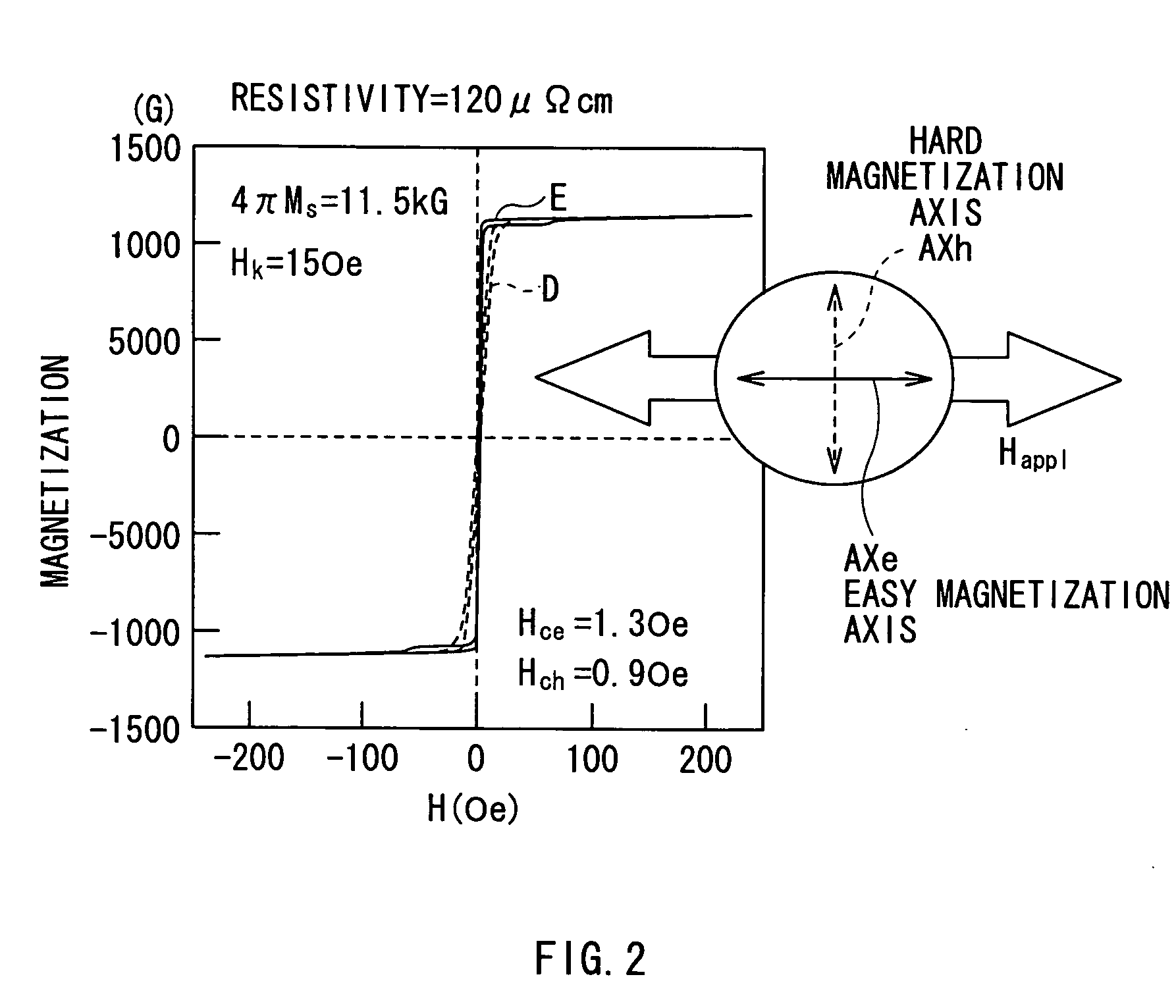Magnetic Thin Film For High Frequency, and Method of Manufacturing Same, and Magnetic Device
a high-frequency, magnetic thin film technology, applied in the direction of magnetic bodies, natural mineral layered products, transportation and packaging, etc., can solve the problems of increasing the cost of mmic, reducing the area occupied by passive elements, and consuming a large amount of expensive semiconductor substrates. , to achieve the effect of high anisotropic magnetic field, good performance and high resistivity
- Summary
- Abstract
- Description
- Claims
- Application Information
AI Technical Summary
Benefits of technology
Problems solved by technology
Method used
Image
Examples
example 1
[0072] A magnetic thin film for high frequencies described in Example 1 was produced according to the following film formation techniques.
[0073] First, a Si wafer on which a 500-nm thick SiO2 film was formed was used as a substrate. Next, a magnetic thin film for high frequencies was deposited on the substrate by use of a facing target sputtering apparatus according to the following ways. That is, preliminary evacuation of the interior of the facing target sputtering apparatus was carried out to 8×10−5 Pa, thereafter Ar gas was introduced into the apparatus until the pressure thereof reached 10 Pa, and then the substrate surface was subjected to sputter etching at an RF power of 100 W for 10 minutes. Subsequently, the Ar gas flow was adjusted so that the pressure might be set to 0.4 Pa, then sputtering of a Co87Zr5Nb8 target was carried out by the power of 300 W and consequently an amorphous film with Co87Zr5Nb8 composition was produced.
[0074] Subsequently, a natural-oxidation lay...
example 2
[0078] On the basis of the above described film formation technique of Example 1, a 2.3-nm thick CoZrNb layer and a 1.0-nm thick natural oxidation layer were alternately layered each in 121 times in a successive manner, and consequently a magnetic thin film (Example 2) having a total film thickness of 400 nm (242 layers in total) was formed. At this time, the volume ratio of the natural-oxidation layer to the whole multilayer film was 30%.
[0079] The magnetic properties of the obtained magnetic thin film are represented in Table 1. A value of saturation magnetization 4 πMs was 0.80 T (=8.0 kG), a value of coercitivity Hce in the easy magnetization direction was 1400 A / m (=17.6 Oe) and a value of coercitivity Hch in the hard magnetization direction was 2950 A / m (=37 Oe). A value of high frequency permeability property obtained was 40 at 1.0 GHz, as a value of the permeability real part (μ1), and a value of resistivity was 860 μΩcm.
example 3
[0080] Based on the film formation technique of the above-mentioned Example 1, after forming a CoZrNb layer of 1.6 nm in thickness, a 1.3 nm natural-oxidation layer was formed by introducing O2 gas with 5 sccm into the interior of the sputtering apparatus for 30 seconds to oxidize the surface of metal layers. The CoZrNb layer of 1.6 nm in thickness and the natural-oxidation layer of 1.3 nm in thickness were alternately formed 138 times respectively in a successive manner, and consequently a magnetic thin film (Example 3) having a total film thickness of 400 nm (276 layers in total) was formed. At this time, the volume ratio of the natural-oxidation layer to that of the whole multilayer film was 45%.
[0081] The magnetic properties of the obtained magnetic thin film are shown in Table 1. A value of saturation magnetization was 0.63 T (=6.3 kG), a value of coercitivity Hce in the easy magnetization direction was 1750 A / m (=22 Oe), and a value of coercitivity Hch in the hard magnetizati...
PUM
| Property | Measurement | Unit |
|---|---|---|
| ferromagnetic resonance frequency | aaaaa | aaaaa |
| thickness | aaaaa | aaaaa |
| thickness | aaaaa | aaaaa |
Abstract
Description
Claims
Application Information
 Login to View More
Login to View More - R&D
- Intellectual Property
- Life Sciences
- Materials
- Tech Scout
- Unparalleled Data Quality
- Higher Quality Content
- 60% Fewer Hallucinations
Browse by: Latest US Patents, China's latest patents, Technical Efficacy Thesaurus, Application Domain, Technology Topic, Popular Technical Reports.
© 2025 PatSnap. All rights reserved.Legal|Privacy policy|Modern Slavery Act Transparency Statement|Sitemap|About US| Contact US: help@patsnap.com



